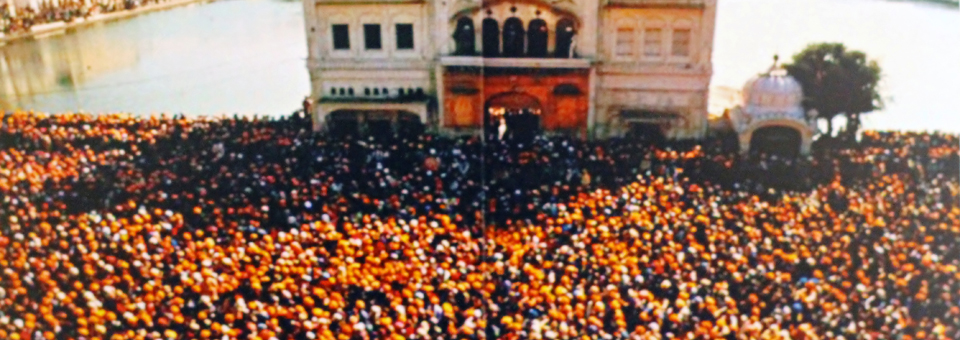“Here comes Vaisakhi, saffron everywhere, in every corner that we can see; together we will celebrate this day in joy and esctasy.” This is the interpreted chorus from a popular folk song which forms my earliest memory of Vaisakhi. Ironic then that such lasting lyrics might surmise what I see today as a restraint on the advancement of Sikhs across the World and the dilution of why Vaisakhi holds importance in this way of life.
In 1698, the Tenth Master of the House of Guru Nanak had sent a proclamation to Sikhs across the sub-continent to reject the custodians who traditionally collected funds on behalf of the Guru. He advised that these ‘Masands’ were no longer acting in his name and that Sikhs were to now travel directly to Anandpur where he was based, at the beginning of the month of Vaisakh. What ultimately took place on that day at Anandpur in 1699 is a story that is widely known amongst Sikhs of all ages and backgrounds and recounted with great pride at this time of year, albeit with some slight variations. However, the establishment of the Khalsa Panth and it’s purpose which is now synonymous with Vaisakhi continues to be misrepresented almost entirely throughout Sikhdom.
For Sikhs, Vaisakhi is neither an event for commemoration, nor a festival in the common understanding of the word. It is not a date in the Sikh calendar akin to those of other faiths as is so often described – our Christmas, Thanksgiving or Eid. Rather it is a date of the utmost importance in any given year, entirely relevant to the time and commanding a relationship with the prevailing Worldly affairs of the day. It is intended to mark the occasion at which members of the Khalsa gather to take stock of the World and determine how to act over the course of the next six months to a year; further, it is the day on which Sikhs who deem themselves ready to be initiated by the double-edged sword make a commitment to living a life beyond their own, forever upstanding for truth and justice at any cost; and above all, it is the opportunity for the wider collective of Sikhs to unfurl their banner at every institution anew, reflecting upon the decisions that have been taken and the choices that have been made which have brought about the reality that we face.
It is this purpose of the Khalsa and the Vaisakhi date which has been watered down over the last century or so, instead defined today by indifferent ‘Akhand Paaths’, carnival-inspired ‘Nagar Kirtans’, and superstitious-ridden Nishan Sahib ceremonies, not to mention the act of taking khande-di-pahul itself which has been wholly devalued. The initiation of a Sikh into the Khalsa is by the double-edged sword which has meaning for a Sikh on multiple levels (e.g. miri-piri, sant-sipahi). It is the creation of an individual who is indivisable from other initiates, forming a body of people who are focused, contemplative, and unflinching when needing to do what is right. This Khalsa is an independent entity answering to no political, religious or social power, sovereign in their own right, autonomous and counting amongst their number the Guru himself. Existing to fight oppression and tyranny, but most importantly to bring about a society in which they as custodians of the House of Guru Nanak could give rise to true freedom that is yet to be realised.
In this light it is no surprise that Vaisakhi is endorsed as a mere festival in the modern era by gatekeepers of society both Sikh and non-Sikh, in order to downplay the political significance of the establishment of the Khalsa. It is not in the interests of those who hold power in the nations Sikhs call home to allow for a strong and organised discourse amongst this most revolutionary group particularly on one of the two dates that was traditionally selected to hold the Sarbat. But as on that fateful day in 1699, when only five stepped forward out of hundreds of thousands, if even a select few continue to maintain what Vaisakhi truly is today and live out the purpose for which the Khalsa was born, it is of no consequence that the masses remain blind. I don’t write so critically to reach the many, in expectation of change or redress; instead read this as a declaration that what was, has not burnt out. If you wish to stoke the fire and step forward into its light as I do, take time out when you reach your Gurdwara next Tuesday, or make your way through the streets with a Nagar Kirtan this weekend, to stop and think. For a start, that’ll do.





